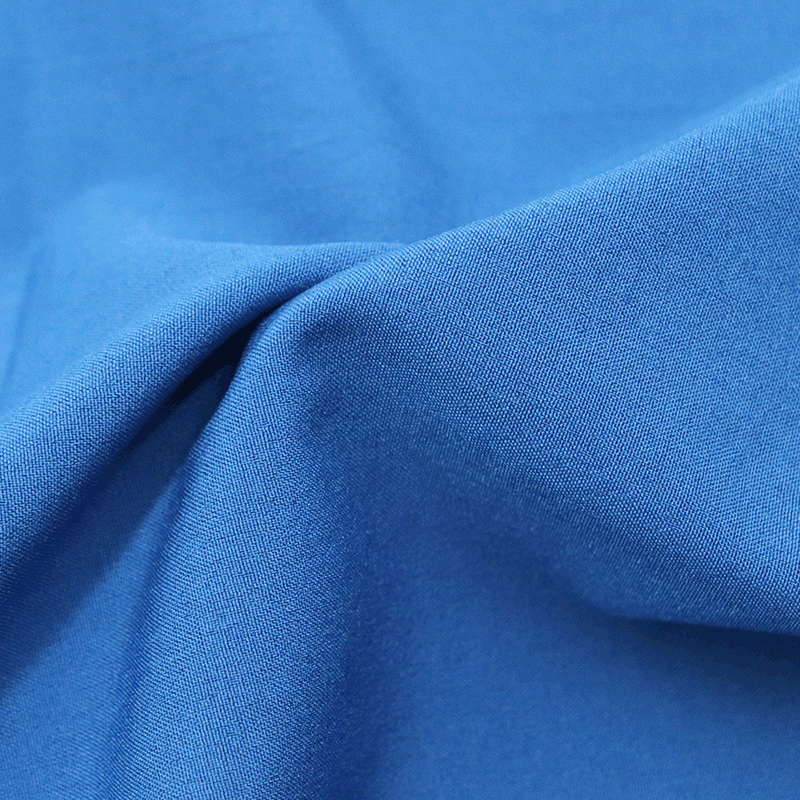From Raw Material to Finished Product: The Production Process of 100% Polyester Fabric
- Share
- publisher
- QPW
- Issue Time
- Aug 28,2024
Summary
Polyester is one of the most widely used fabrics in the world, known for its durability, versatility, and ease of care. But have you ever wondered how this synthetic fabric is made? In this article, we will take you through the intricate journey of 100% polyester fabric, from raw materials to the final product, illuminating each stage of its production process.

From Raw Material to Finished Product: The Production Process of 100% Polyester Fabric
Polyester is one of the most widely used fabrics in the world, known for its durability, versatility, and ease of care. But have you ever wondered how this synthetic fabric is made? In this article, we will take you through the intricate journey of 100% polyester fabric, from raw materials to the final product, illuminating each stage of its production process.
Step 1: Sourcing Raw Materials
The production of polyester begins with crude oil, which serves as a primary source. The oil undergoes a refining process to produce two key chemical compounds: ethylene glycol and terephthalic acid. Ethylene glycol is derived from petroleum via a series of chemical reactions, while terephthalic acid is produced from the oxidation of para-xylene, another petroleum byproduct. These two chemicals are essential for creating polyester fibers, laying the foundation for the entire production process.
Step 2: Polymerization
Once the raw materials are sourced, they undergo a chemical reaction called polymerization. This process involves combining ethylene glycol and terephthalic acid under high temperature and pressure conditions. The result is long chains of polyester molecules, forming a solid polymer structure. This synthetic polymer is then cooled and solidified into small pellets known as "polyester chips." The quality of these chips is crucial, as it directly impacts the characteristics of the finished fabric.
Step 3: Spinning the Fibers
The polyester chips are then melted and extruded through spinnerets, which are devices with tiny holes that resemble a showerhead. As the molten polyester passes through these holes, it cools and solidifies, forming long continuous strands of polyester fibers. Depending on the intended use, this process can create various types of fibers, including filament yarns (continuous strands) and staple fibers (shorter lengths). Each type of fiber has unique properties, influencing the final fabric's texture and strength.
Step 4: Texturizing and Finishing
After spinning, the polyester fibers are often texturized to enhance their properties. Texturizing adds bulk and improves the fabric's softness and elasticity, making it more comfortable to wear. This can be achieved through processes like crimping or twisting the fibers. Following texturizing, the fibers undergo finishing processes such as dyeing, printing, and treatments to enhance their appearance and performance. Chemical finishes may also be applied to impart specific qualities, such as water resistance or flame retardancy.
Step 5: Weaving or Knitting
Once the fibers are ready, they are woven or knitted into fabric. Weaving involves interlacing threads at right angles to create a strong, stable structure. Common weaving patterns include plain, twill, and satin, each resulting in different textures and appearances. Knitting, on the other hand, involves looping yarn together to create a stretchier fabric, widely used in activewear and casual clothing. The choice between weaving and knitting depends on the desired end-use of the fabric, as well as the aesthetic qualities sought by designers.
Step 6: Quality Control and Finalization
Before reaching consumers, the finished polyester fabric undergoes rigorous quality control checks. These inspections ensure consistency in color, texture, strength, and durability. Factors like shrinkage, pilling, and fading are evaluated to meet industry standards. Once approved, the fabric is rolled and packaged for distribution to manufacturers and retailers, ready to be transformed into a variety of products.
Environmental Considerations
While the production of 100% polyester fabric offers many advantages, it is important to recognize its environmental impact. The reliance on non-renewable resources raises concerns about sustainability. However, advancements in recycling technology have led to the creation of recycled polyester, derived from post-consumer plastic bottles and waste. This innovative process significantly reduces the environmental footprint of polyester production and promotes the circular economy.
Conclusion
The journey from raw material to finished product is a complex process that showcases the innovation and technology behind 100% polyester fabric. Its remarkable properties—such as durability, moisture-wicking capabilities, and resistance to wrinkling—have made it a popular choice in various applications, including fashion, home textiles, and industrial uses. By understanding the production process, consumers can appreciate the craftsmanship involved in creating this ubiquitous fabric, leading to more informed purchasing decisions. Stay tuned for our next episode, where we will explore the benefits and drawbacks of polyester fabrics!